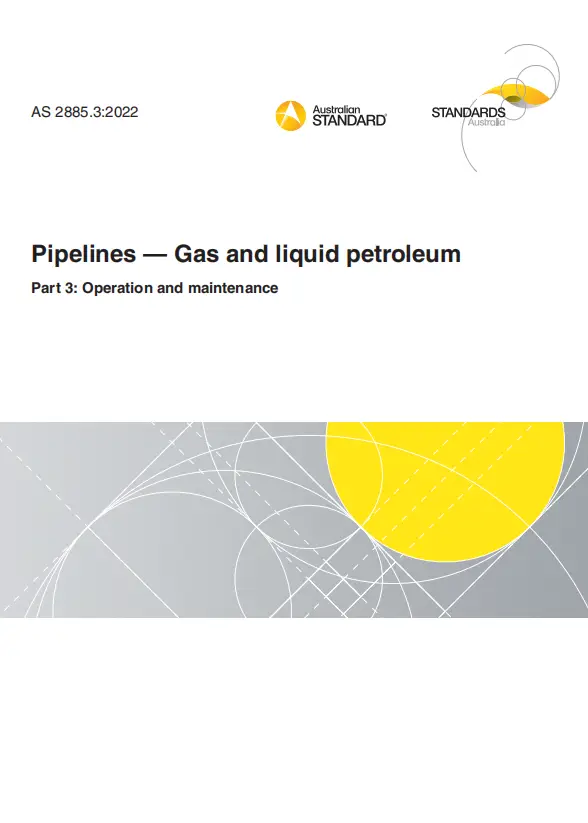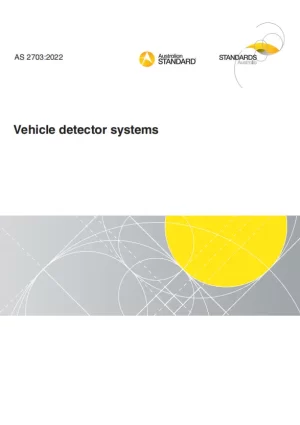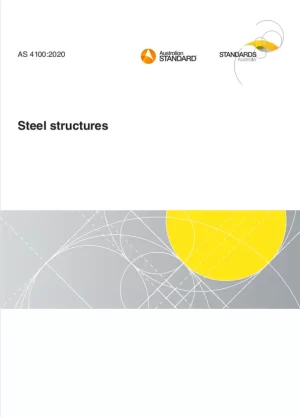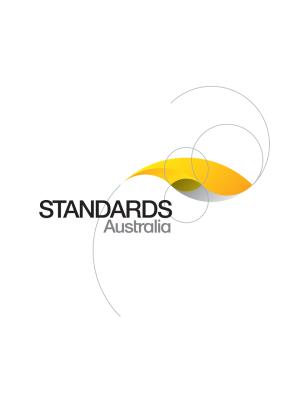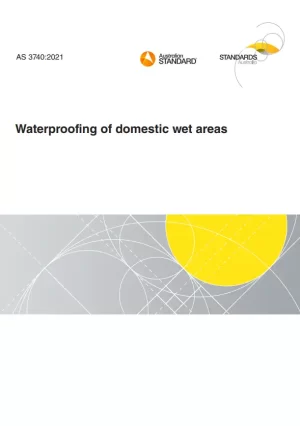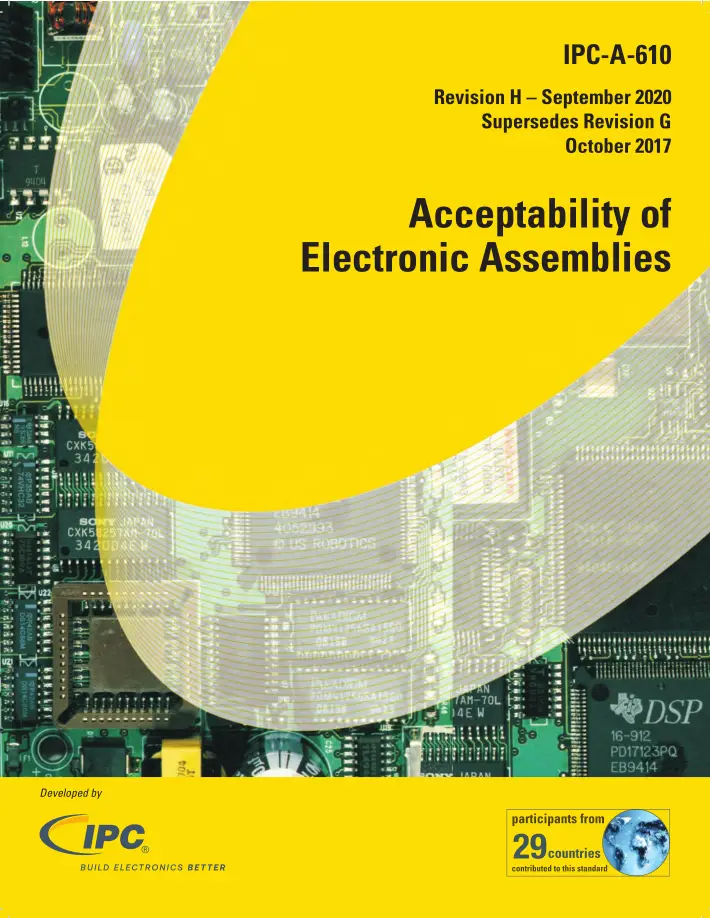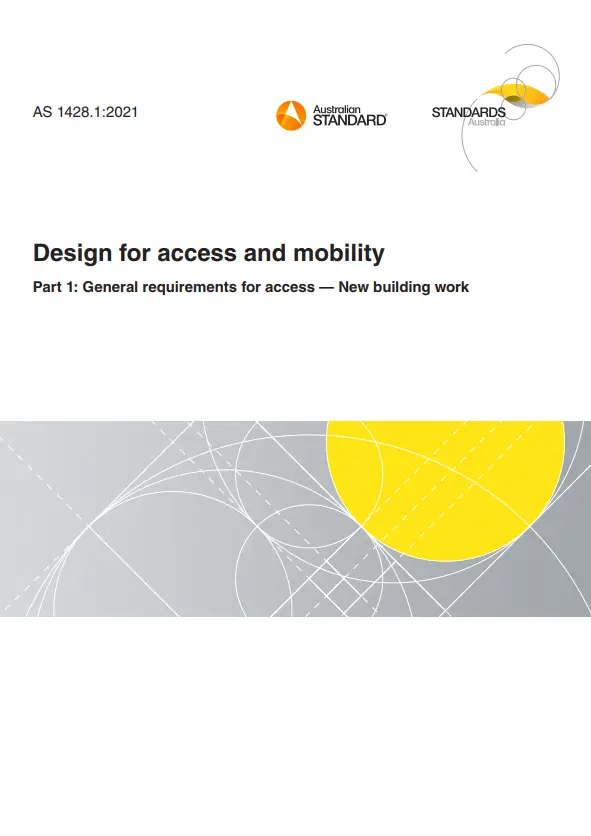Table of cotents
Preface
1 Scope and general
1.1 Scope
1.2 Basis of AS 2885.3
1.3 Application
1.3.1 Current application
1.3.2 Pipelines in high consequence areas
1.3.3 Retrospective application
1.4 Approval
1.5 Normative references
1.6 Terms and definitions
1.7 Abbreviations
2 Pipeline management system
2.1 Basis of section
2.2 PMS requirement
2.3 PMS elements
2.3.1 General
2.3.2 Management
2.3.2.1 Policy and commitment
2.3.2.2 Management structure
2.3.2.3 Responsibilities, accountabilities and authorities
2.3.2.4 Training and competency
2.3.2.5 Resourcing
2.3.2.6 Change management
2.3.2.7 Review of the PMS
2.3.3 Planning
2.3.3.1 General
2.3.3.2 Planning for normal operation
2.3.3.3 Planning and preparation for abnormal operations
2.3.3.4 Isolation plan
2.3.3.5 Emergency planning and preparation
2.3.3.6 Records management
2.3.4 Measurement and evaluation
2.3.4.1 General
2.3.4.2 Performance evaluation
2.3.4.3 Accident or incident investigation and reporting
2.3.4.4 Audits
2.3.4.5 Corrective and preventative action
2.3.5 Consultation, communication and reporting
3 Preparation for operation and environmental management
3.1 Basis of section
3.2 Preparation requirements
3.3 Preparation for periodic reviews of management documentation
3.4 Environmental management
3.4.1 General
3.4.2 Native vegetation, fauna and biosecurity
3.4.3 Emissions
3.4.4 Heritage
3.4.5 Water and watercourses
3.4.6 Waste
3.4.7 Chemical spill
3.5 Readiness for operation
3.6 Handover to operations
3.7 Delayed commencement of operation
4 Site safety management
4.1 Basis of section
4.2 Safety planning — General
4.3 Safety planning — Site based assessment
4.3.1 Job hazard analysis (jha)
4.3.2 Preliminary jha
4.3.3 On-site jha
4.4 Permit to work system
4.5 Electrical hazards safety
4.6 Venting and/or purging pipelines
4.7 Working on purged pipelines
4.8 Welding onto an in-service pipeline
4.8.1 Welding requirements
4.8.2 Monitoring of operating conditions
4.8.3 Resumption of normal operation
4.9 Working on pipelines where fluid is escaping
4.10 Hot-tapping operations
5 Pipeline system integrity management
5.1 Basis of section
5.2 Integrity management process
5.3 Integrity management planning
5.3.1 General
5.3.2 Integrity activity planning
5.3.3 Activity resourcing and scheduling
5.4 Executing integrity activities
5.5 Delivery monitoring
5.6 Fit for purpose assessment
5.7 Corrective action determination
5.7.1 General
5.7.2 PIMP review and update
6 Pipeline structural integrity
6.1 Basis of section
6.2 Structural integrity management
6.2.1 General
6.2.2 Assessment for high consequence areas
6.2.3 Pipeline pressure test records
6.2.3.1 General
6.2.3.2 Pipelines with pressure test records not conforming to AS/NZS 2885.5
6.2.3.3 Pipelines without pressure test records
6.2.4 Fracture resistance assessment
6.3 Pipe wall integrity threats
6.4 Integrity threat mitigation and monitoring
6.4.1 General
6.4.2 Internal metal loss
6.4.3 External corrosion
6.4.3.1 General
6.4.3.2 Above-ground visual inspection
6.4.3.3 Buried coating inspection
6.4.3.4 Cathodic protection system
6.4.4 Pipe wall fatigue
6.4.5 Land instability
6.4.6 Undetected damage
6.5 Integrity assessment techniques
6.5.1 General
6.5.2 In-line inspection
6.5.3 Pressure testing
6.5.4 Direct assessment
6.5.5 Leak detection
7 Pipeline corridor management
7.1 Basis of section
7.2 External interference management
7.3 Procedural controls
7.3.1 General
7.3.2 Liaison
7.3.2.1 Liaison — General
7.3.2.2 Landowner and occupier liaison
7.3.2.3 Planning and development liaison
7.3.2.4 Third party liaison
7.3.3 One-Call services
7.3.4 Pipeline marking
7.3.4.1 Pipeline markers
7.3.4.2 Buried marker tape
7.3.5 Agreements with other entities
7.3.6Pipeline system patrol program
7.3.7 Remote intrusion monitoring
7.4 Corridor surveillance
7.5 Controlling activities near pipeline systems
7.5.1 Procedures for controlling third party activities
7.5.2 Licensee’s own activities
7.5.3 Stress and strain
7.5.4 Placement of material on or near the pipeline system
7.5.5 Vibration in the vicinity of a pipeline system
7.5.6 Vegetation on, or near, the pipeline system
7.5.7Pipeline corridor access
7.5.8 Temporary pipelines installed above-ground or with reduced depth of cover
8 Station operation and maintenance
8.1 Basis of section
8.2 General principles for operation and maintenance of stations
8.3 Safety critical equipment
8.3.1 General
8.3.2 Pressure relief devices
8.3.3 Control systems and equipment
8.3.4 Critical valves
8.4 Pressure containing equipment
8.4.1 Pressure vessels
8.4.2 Piping
8.5 Station operational checks
8.6 Station structural integrity
8.7 Compressor and pump stations
8.8 Station local control systems
8.9 Pipeline operation and control
8.9.1 General
8.9.2 Operating parameters
8.10 Supervisory control and data acquisition
8.11 Site security
8.12 General station equipment and components
8.12.1 General
8.12.2 Above-ground valves
8.12.3 Pipeline supports
8.12.4 Pipeline soil / air interface
8.12.5 Pig trap inspection and maintenance
8.12.6 Tunnels and valve pits
8.12.7 Buildings housing pipeline system equipment
8.13 Fire and gas protection systems
9 Anomaly assessment and defect repair
9.1 Basis of section
9.2 Anomaly management — Initial assessment and response
9.3 Anomaly assessment
9.3.1 General
9.3.2 Key input requirements
9.3.2.1 General
9.3.2.2 Inspection tool accuracy
9.3.2.3 Selection of a factor of safety
9.3.2.4 Anomaly degradation rates
9.3.3 Recommended anomaly assessment methods
9.3.4 Assessment outputs
9.3.5 Anomaly-specific acceptance and further assessment criteria
9.3.5.1 General
9.3.5.2 Corrosion anomalies
9.3.5.3 Gouges, grooves and notches
9.3.5.4 Dents and buckles
9.3.5.5 Crack-like anomalies
9.3.5.6 Anomalies on welds
9.3.5.7 Manufacturing anomalies
9.3.5.8 Anomalies on fibreglass pipelines
9.4 Defect repairs
9.4.1 General
9.4.2 Repair process
9.4.3 Temporary repairs
9.4.4 Permanent repairs
9.4.5 Repair plan
9.5 Repair and mitigation methods
9.5.1 General
9.5.2 Replacement
9.5.3 Grinding
9.5.4 Repair sleeves
9.5.5 Mechanical sleeves
9.5.6 Pipeline de-rating
9.5.7 Qualification of alternative repair methods
9.6 Pipeline coating repair
9.6.1 General
9.6.2 Coating repair
10 Changes to approved operating conditions
10.1 Basis of section
10.2 Basic requirements
10.3 Design change
10.4 Design change assessment
10.5 MAOP upgrade
10.6 Restricted operating pressure
10.7 Increasing a reduced MAOP
10.8 Pipeline suspension
10.8.1 General
10.8.2 Return to service
10.9 Pipeline failure
10.10 Pipeline abandonment
10.10.1 General
10.10.2 Abandonment in place
10.10.3 Abandonment by removal
10.10.4 Segmentation of an abandoned pipeline
10.10.5 Additional requirements for abandonment
10.10.6 Abandonment records
11 Emergency response preparedness
11.1 Basis of section
11.2 Emergency planning scope
11.3 Emergency response plan
11.3.1 General
11.3.2 Liaison with emergency services
11.4 Communicating during an emergency response
12 Records management
12.1 Basis of section
12.2 Principles of records management
12.3 Design, construction and commissioning records
12.4 Operation and maintenance records
12.5 Abandonment records
Appendix A
Appendix B
Appendix C
C.1 Documentation of a PMS
C.2 Objectives of a PMS
C.3 Documentation in jurisdictions requiring a safety case
Appendix D
Appendix E
E.1 Purging a gas pipeline
E.2 Purging a hydrocarbon liquids pipeline
E.3 Purging an HVPL pipeline
E.4 Trapped hydrocarbon
E.5 Working on purged pipelines
Appendix F
Appendix G
Bibliography

